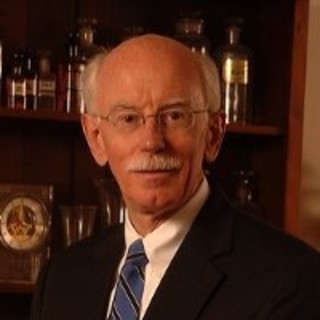
I imagine that the vast majority of your patients would like to live a long time and avoid most of the complex chronic diseases that plague older individuals with disabilities, death and high medical costs. You would like that also. Of course, there’s no pill you can offer and no gene therapy, at least not yet. But with straightforward lifestyle modifications, preferably begun as a young adult, it is indeed possible to live a long and healthy life.
Beginning sometime in early adulthood and certainly by age 40, each body organ begins a slow but inexorable decline — about 1% per year. Not noticed for years but eventually that the decline crosses a functional threshold.
Three examples can be tied together to make this point. Bone mineral density, muscle mass and strength and balance all decline. At some point, reduced balance leads to a fall which cannot be stopped by the weakened muscles resulting in a fall on osteoporotic bones with an ensuing fracture. Cognitive function likewise declines slowly, not noticed for years but eventually reaching a point where the person notices difficulty with mathematics or memory.
Concurrently, a variety of complex chronic diseases tend to develop as the years roll by — age prevalent diseases such as heart failure, cancer, diabetes type 2, Alzheimer’s or rheumatoid arthritis.
This decline in function is about 1% per year, varying from organ to organ, year to year and person to person but the decline continues for all. But if that decline could be reduced to, say, 0.75% per year, the long-term impact would be very substantial. It is similar in concept to saving for retirement. The earlier you start, the more you benefit from compounding. It is an intriguing and important concept that patients need to understand.
Of course, if something speeds up the decline one reaches that functional impairment stage much sooner. [Chart 1 shows a 1% decline beginning at age 40. Chart 2 shows the same 1% with additions of a 1.25% and a 0.75% decline.]


One can speed up the decline by becoming a “couch potato” or, unfortunately, just leading the typical sedentary American lifestyle with excessive fast foods, few veggies and fruits and too much added sugar, persistent chronic stress and far too little sleep.
So, what can slow the decline, add years of life and prevent complex chronic diseases? Lifestyle modifications which cost nothing but for many can be difficult to accomplish. For the benefit of most organs and functions, the “7 Keys to Healthy Aging” (as I call them) are an appropriate diet, adequate aerobic and resistance exercises, management of chronic stress, enhanced sleep and no tobacco. To these add intellectual challenges and social engagement to minimize cognitive decline.
Here are some basics — which almost everyone knows but most don’t follow:
Eat a well-balanced diet heavy on veggies with many colors and lots of green leafies everyday — cover 2/3rds of the plate with vegetables and be sure to have fruits. Eat only whole grains not refined white flour as found in most of todays cereals, bread, pasta, pies, cakes, cookies and of course pizza. Do eat beans and lentils, nuts and seeds and use lots of olive oil. Have at least two meals per week of cold-water fin fish with their omega 3 fatty acids. Have some but not too much poultry and limit red meat to only grass fed, never grain fed in a pen. And cut way back on added sugar. (The average American consumes 154 pounds of added sugar per year! That’s 30 five-pound bags of sugar lined up on the kitchen table.)
Get 30 minutes of aerobic exercise 6 days per week — just walking is fine. But better yet if twice per week one does high intensity interval exercise (HIIT). Add in resistance exercise twice per week. And perhaps balance exercise just for good measure.
Chronic stress is under appreciated. Since we can’t avoid all stresses in life, we need to learn how to manage it with breathing, the Benson Relaxation Response, meditation, yoga or Tai Chi. Exercise is a great way to reduce stress; fast food and sugary foods exacerbate it.
Most Americans are getting too little sleep. Many believe that sleep is optional; it is not. That’s when the brain gets “washed” of toxins and when memories are organized and “filed.” Sleep in a dark room, no noise, no cell phones or TVs. Before bed don’t watch violence; try comedy or soft music with a 60 beat per minute rhythm. Follow the circadian rhythm; go to bed and get up at about the same time every day. Try to get 8 hours sleep per night.
No tobacco. None. Enough said.
These five will make a real difference for all body organs including the brain. But the brain also needs intellectual challenges and social engagement.
Of course, it is easier said than done to help patients learn about and then follow these pathways to better health. And it takes a lot of time — the doctor’s time and probably a health coach, a nutritionist, perhaps a personal trainer. But when followed it is much more valuable than prescriptions for e;evated blood pressure, cholesterol or blood sugar.
The problems for physicians of course are reimbursement, time and training. This type of assistance to patients is not covered by insurance, illogical as that may be. Today’s perverse pressures encourage short visits which means little opportunity to delve into these seven critical lifestyles with each and every patient. And, unfortunately, medical school and residency training is generally woefully deficient in teaching nutrition, exercise physiology and hardly gives a nod to the importance of stress and sleep.
Insurers are not likely to change so it becomes imperative that primary care physicians and other healthcare providers to figure out ways to offer this prescription and do so in an effective manner. I’m an advocate for direct primary care (DPC) which frees up time, allows more attention to these types of endeavors, and always results in greater satisfaction for the patient and less frustration for the doctor.
When people are able to follow these precepts, the results are clear — healthier patients who live longer with greater satisfaction. Just what we all entered medicine to achieve. And total medical costs come way down which is good for everybody.
Stephen C Schimpff, MD, MACP, is a quasi-retired internist, professor of medicine and public policy, former CEO of the University of Maryland Medical Center and author of Fixing the Primary Care Crisis and Longevity Decoded — The 7 Keys to Healthy Aging. He reports no conflicts of interest.







